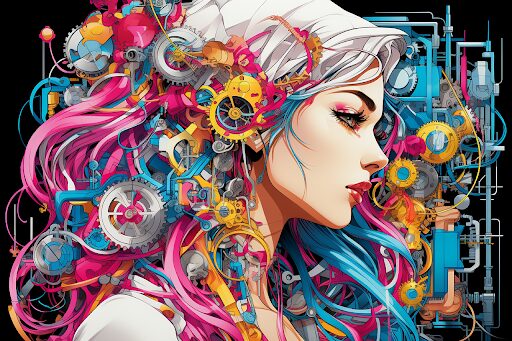In the age of artificial intelligence (AI), one of the most fascinating and controversial innovations is AI face swapping. This technology, which allows the realistic swapping of faces in images and videos, has captured the attention of the public, media creators, developers, and lawmakers alike. From entertainment to security concerns, AI face swap is a hot topic that reflects both the power and risks of AI.
What Is AI Face Swap?
Free AI Face Swap refers to the use of machine learning algorithms to replace a person’s face in an imageFaceSwapAI or video with the face of someone else—often so seamlessly that the result appears authentic. These swaps are typically powered by deep learning models, particularly Generative Adversarial Networks (GANs), which can generate hyper-realistic images by learning patterns in large datasets.
Unlike traditional face-swapping techniques that might look artificial or rough, AI face swaps are often difficult to detect. The technology can replicate expressions, skin tones, and lighting to create a nearly flawless illusion.
How Does AI Face Swapping Work?
The face-swapping process generally involves the following steps:
- Data Collection: AI models need large datasets of the target and source faces to learn from. These include images or video footage from multiple angles and with various expressions.
- Facial Recognition & Mapping: The system identifies key facial features like eyes, nose, mouth, and jawline.
- Alignment: The faces are aligned using algorithms to ensure that the features match properly.
- Face Generation: The AI then reconstructs the target’s face using features from the source and overlays it onto the original video or image.
- Post-Processing: Lighting, texture, and skin tone are adjusted to make the swap look natural.
Popular tools for AI face swap include DeepFaceLab, FaceSwap, Zao, and mobile apps like Reface and FaceApp.
Common Applications of AI Face Swap
- Entertainment and Social Media
One of the most popular uses of AI face swap is in entertainment. Apps allow users to insert their faces into movie scenes, music videos, or viral memes. TikTok and Instagram users often use these effects to create humorous or personalized content. Movie studios have even used the technology to de-age actors or recreate their likeness in sequels or spin-offs.
- Marketing and Advertising
Brands are exploring AI face swaps for creating personalized advertisements. For example, a viewer could see themselves in a commercial for a product, making the ad more engaging and memorable.
- Film and TV Production
Instead of hiring actors for dangerous stunts or de-aging roles using costly CGI, directors are now turning to face-swapping AI. This significantly reduces costs and expands creative possibilities.
- Gaming and Virtual Reality
Face swapping allows for immersive experiences in gaming and virtual worlds. Players can create avatars with their real faces or those of celebrities, adding a layer of realism and personalization.
Ethical and Legal Concerns
Despite its many benefits, AI face swap technology raises serious ethical and legal issues.
- Deepfakes and Misinformation
The most controversial use of face-swapping AI is in the creation of deepfakes—videos that convincingly portray someone saying or doing things they never did. These can be used to spread fake news, commit fraud, or tarnish someone’s reputation. Political figures, celebrities, and private individuals have all been targeted.
- Consent and Privacy
Using someone’s face without their permission—especially for profit or malicious purposes—can violate privacy rights. Laws are still catching up to this fast-evolving technology, leaving many gray areas when it comes to consent.
- Cyberbullying and Harassment
Face-swapping AI can be used to create harmful or inappropriate content, including revenge porn and harassment campaigns. These cases can have serious psychological and reputational effects on victims.
- Trust and Authenticity
As AI-generated media becomes more realistic, it becomes harder to distinguish between real and fake. This can erode public trust in media, making it difficult to verify video evidence in court or journalism.
The Legal Landscape
Governments around the world are beginning to respond to the rise of face swap AI. For example:
- The United States has introduced bills aimed at criminalizing malicious deepfakes, especially those used in elections or pornographic content.
- The European Union’s AI Act proposes strict regulations on the use of AI in media, requiring transparency when synthetic content is created.
- China now requires creators of deepfakes to clearly label their content and obtain consent from the individuals involved.
While these measures are a good start, international cooperation will be crucial to creating effective safeguards.
Future Outlook: Where Do We Go From Here?
AI face swap technology is not inherently good or bad—its impact depends on how it’s used. Looking ahead, we can expect:
- Better detection tools: AI will also help create tools that identify fake media, improving the chances of flagging harmful content.
- Stronger regulation: Laws will likely become more detailed and stringent as more cases of misuse come to light.
- Ethical AI development: Companies and researchers are being urged to build ethics into their algorithms, such as requiring consent for face data.
- More creative possibilities: In the hands of artists and creators, this technology could revolutionize storytelling, advertising, and social interaction.
Final Thoughts
AI face swap technology is a fascinating example of how artificial intelligence is transforming the way we create and consume media. From viral videos to blockbuster movies, it offers creative opportunities like never before. However, the darker side—privacy violations, misinformation, and deepfakes—cannot be ignored.
As users, developers, and lawmakers, we all have a role to play in ensuring that this powerful tool is used responsibly. With the right regulations and ethical practices, AI face swap can remain a force for creativity, not deception.
AI face swap refers to the use of machine learning algorithms to replace a person’s face in an image or video with the face of someone else—often so seamlessly that the result appears authentic. These swaps are typically powered by deep learning models, particularly Generative Adversarial Networks (GANs), which can generate hyper-realistic images by learning patterns in large datasets.
Unlike traditional face-swapping techniques that might look artificial or rough, AI face swaps are often difficult to detect. The technology can replicate expressions, skin tones, and lighting to create a nearly flawless illusion.
How Does AI Face Swapping Work?
The face-swapping process generally involves the following steps:
- Data Collection: AI models need large datasets of the target and source faces to learn from. These include images or video footage from multiple angles and with various expressions.
- Facial Recognition & Mapping: The system identifies key facial features like eyes, nose, mouth, and jawline.
- Alignment: The faces are aligned using algorithms to ensure that the features match properly.
- Face Generation: The AI then reconstructs the target’s face using features from the source and overlays it onto the original video or image.
- Post-Processing: Lighting, texture, and skin tone are adjusted to make the swap look natural.
Popular tools for AI face swap include DeepFaceLab, FaceSwap, Zao, and mobile apps like Reface and FaceApp.
Common Applications of AI Face Swap
- Entertainment and Social Media
One of the most popular uses of AI face swap is in entertainment. Apps allow users to insert their faces into movie scenes, music videos, or viral memes. TikTok and Instagram users often use these effects to create humorous or personalized content. Movie studios have even used the technology to de-age actors or recreate their likeness in sequels or spin-offs.
- Marketing and Advertising
Brands are exploring AI face swaps for creating personalized advertisements. For example, a viewer could see themselves in a commercial for a product, making the ad more engaging and memorable.
- Film and TV Production
Instead of hiring actors for dangerous stunts or de-aging roles using costly CGI, directors are now turning to face-swapping AI. This significantly reduces costs and expands creative possibilities.
- Gaming and Virtual Reality
Face swapping allows for immersive experiences in gaming and virtual worlds. Players can create avatars with their real faces or those of celebrities, adding a layer of realism and personalization.
Ethical and Legal Concerns
Despite its many benefits, AI face swap technology raises serious ethical and legal issues.
- Deepfakes and Misinformation
The most controversial use of face-swapping AI is in the creation of deepfakes—videos that convincingly portray someone saying or doing things they never did. These can be used to spread fake news, commit fraud, or tarnish someone’s reputation. Political figures, celebrities, and private individuals have all been targeted.
- Consent and Privacy
Using someone’s face without their permission—especially for profit or malicious purposes—can violate privacy rights. Laws are still catching up to this fast-evolving technology, leaving many gray areas when it comes to consent.
- Cyberbullying and Harassment
Face-swapping AI can be used to create harmful or inappropriate content, including revenge porn and harassment campaigns. These cases can have serious psychological and reputational effects on victims.
- Trust and Authenticity
As AI-generated media becomes more realistic, it becomes harder to distinguish between real and fake. This can erode public trust in media, making it difficult to verify video evidence in court or journalism.
The Legal Landscape
Governments around the world are beginning to respond to the rise of face swap AI. For example:
- The United States has introduced bills aimed at criminalizing malicious deepfakes, especially those used in elections or pornographic content.
- The European Union’s AI Act proposes strict regulations on the use of AI in media, requiring transparency when synthetic content is created.
- China now requires creators of deepfakes to clearly label their content and obtain consent from the individuals involved.
While these measures are a good start, international cooperation will be crucial to creating effective safeguards.
Future Outlook: Where Do We Go From Here?
AI face swap technology is not inherently good or bad—its impact depends on how it’s used. Looking ahead, we can expect:
- Better detection tools: AI will also help create tools that identify fake media, improving the chances of flagging harmful content.
- Stronger regulation: Laws will likely become more detailed and stringent as more cases of misuse come to light.
- Ethical AI development: Companies and researchers are being urged to build ethics into their algorithms, such as requiring consent for face data.
- More creative possibilities: In the hands of artists and creators, this technology could revolutionize storytelling, advertising, and social interaction.
Final Thoughts
AI face swap technology is a fascinating example of how artificial intelligence is transforming the way we create and consume media. From viral videos to blockbuster movies, it offers creative opportunities like never before. However, the darker side—privacy violations, misinformation, and deepfakes—cannot be ignored.
As users, developers, and lawmakers, we all have a role to play in ensuring that this powerful tool is used responsibly. With the right regulations and ethical practices, AI face swap can remain a force for creativity, not deception.
For more info, please visit here:
Website: https://faceswapai.com/
Phone: 09608900761
Address: 144 Sarangani, Ayala Alabang, Muntinlupa, 1780 Metro Manila, Philippines





























